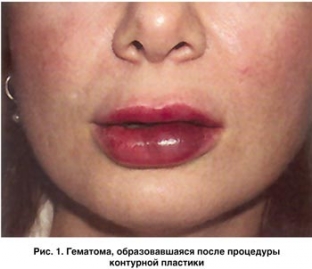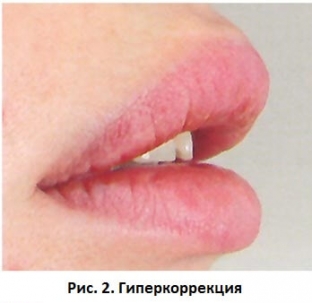Contour plastic – This is one of the most popular and sought after cosmetic procedures today. The name of the procedure speaks for itself – with its help, it is possible to restore the contours of various structures of the face and body of a person. The essence of contouring is that at the level of the dermis and hypodermis, special fillers, called fillers, are introduced supraperiosteally into the patient's skin. They are produced on the basis of collagen, hyaluronic acid, calcium hydroxyapatite and polylactic acid. With the help of the introduction of fillers, it is possible to restore volumes that have been lost as a result of age-related or other changes in the body. But like any other procedure, there are some complications of contouring, which you can read about on estet-portal.com.
The most common complications of contouring
Complications of contouring – these are quite rare phenomena that can occur for various reasons.
Most of the complications of contouring - these are temporary effects that respond well to treatment.
But in some cases, more serious complications may occur that affect the general condition of the patient.
The most common complications of contour plastic surgery are:
1. Hematoma formation
 Hematoma as a complication of contouring occurs when blood vessels are damaged during the injection. Cosmetologists are advised to apply cold to the injection site immediately after it is performed as a prevention of hematoma formation. If complications nevertheless arose – applying special creams and gels containing heparin to the hematoma area will help to eliminate it.
Hematoma as a complication of contouring occurs when blood vessels are damaged during the injection. Cosmetologists are advised to apply cold to the injection site immediately after it is performed as a prevention of hematoma formation. If complications nevertheless arose – applying special creams and gels containing heparin to the hematoma area will help to eliminate it.
2. Infectious complications of contouring
The occurrence of such complications is associated with a violation of the rules of antisepsis and asepsis, which is why it is not recommended to carry out injections at home, but only in the clinic's offices. For the treatment of infectious complications, antibacterial and non-steroidal anti-inflammatory drugs are prescribed.
3. Allergic reactions
Manifestation of Allergy – this is a complication associated with the individual reaction of the patient's body to one or another component of the injectable preparation. The patient is prescribed antihistamines, and in severe cases – glucocorticosteroids.
4. Aggravation of herpetic infection
If the patient is a carrier of the herpes virus and from time to time he has manifestations of a herpes infection – after the introduction of fillers, a complication of this kind may occur. Proper history taking and prescribing antiviral drugs before contouring can help avoid these complications.
5. Overcorrection
 This is a fairly common complication of contouring resulting from the irrational introduction of fillers. The treatment of such a complication depends on which substances were injected into the patient. Hypercorrection with fillers based on hyaluronic acid is eliminated quite quickly: the patient is injected with longidase or hyaluronidase directly into the focus of hypercorrection. Hypercorrection with preparations based on collagen is eliminated using electrophoresis or phonophoresis with lidase, but excess preparation based on calcium hydroxyapatite can be removed only through surgical intervention.
This is a fairly common complication of contouring resulting from the irrational introduction of fillers. The treatment of such a complication depends on which substances were injected into the patient. Hypercorrection with fillers based on hyaluronic acid is eliminated quite quickly: the patient is injected with longidase or hyaluronidase directly into the focus of hypercorrection. Hypercorrection with preparations based on collagen is eliminated using electrophoresis or phonophoresis with lidase, but excess preparation based on calcium hydroxyapatite can be removed only through surgical intervention.
6. Vascular embolism
The most serious complications of contouring are associated with deep injection of dense fillers, resulting in vascular compression, ischemia, and necrosis with subsequent scarring on the 3-4th day after injection. Treatment of the complication is aimed at improving microcirculation in the damaged area and reducing the volume of fillers in the tissues. Subsequently, the patient is prescribed symptomatic therapy.
A good knowledge of the anatomy of the skull and a correct assessment of the aesthetic problem in each individual patient will help to select the appropriate filler, determine the tactics of its introduction and avoid the complications of contouring.
Only a qualified person who has been trained in this procedure can correctly and safely perform "beauty injections".







Add a comment